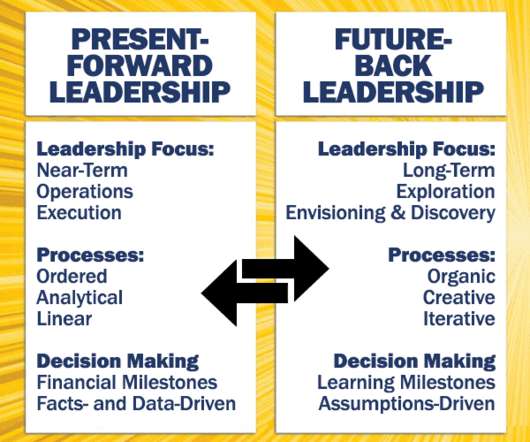Lead from the Future
Leading Blog
APRIL 2, 2021
The authors point out that present-forward thinking innovation at most organizations is mostly incremental improvements to what they are already doing. These needed capabilities become your innovation portfolio. Set up an organizational model that protects breakthrough innovation teams from the countervailing influences of the core.





























Let's personalize your content